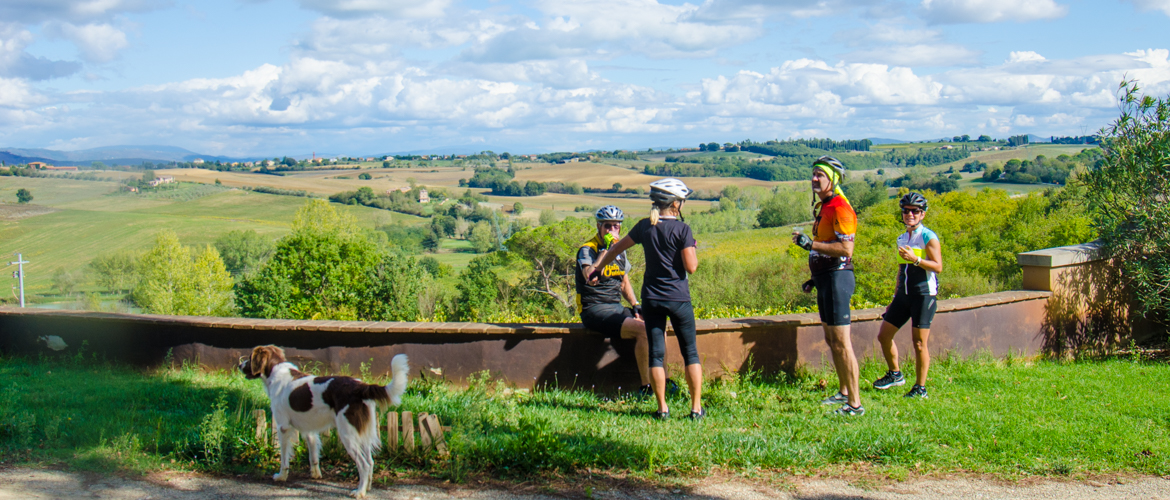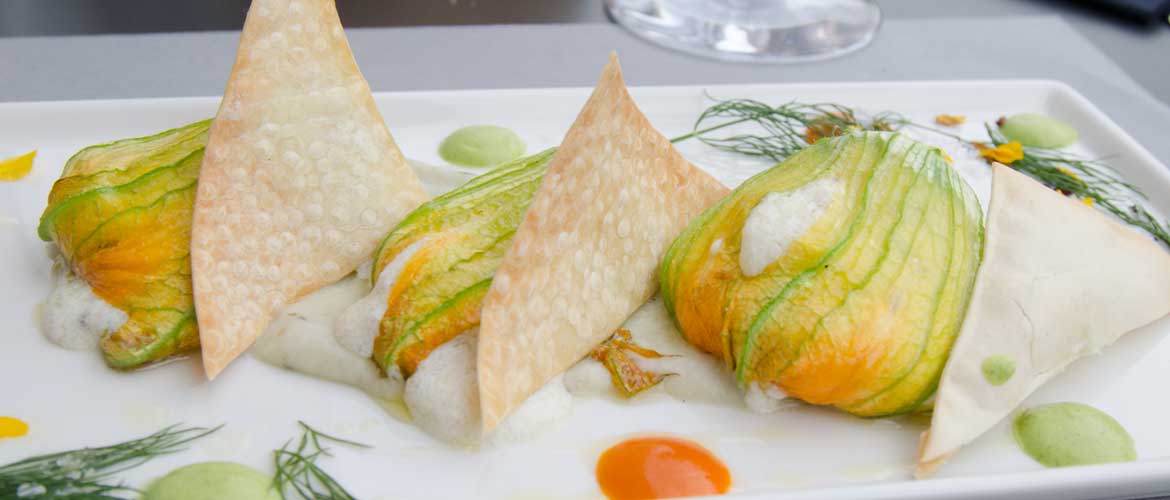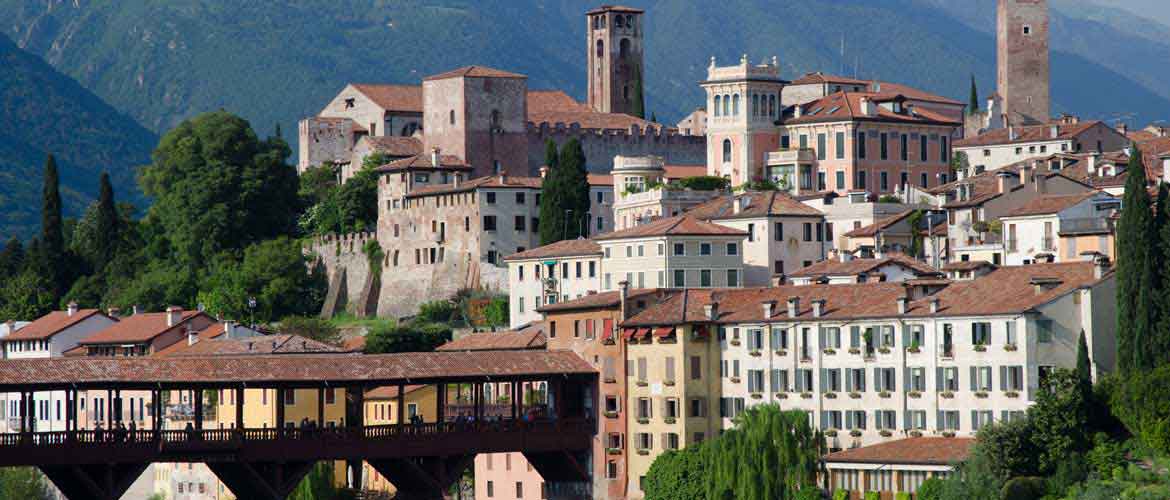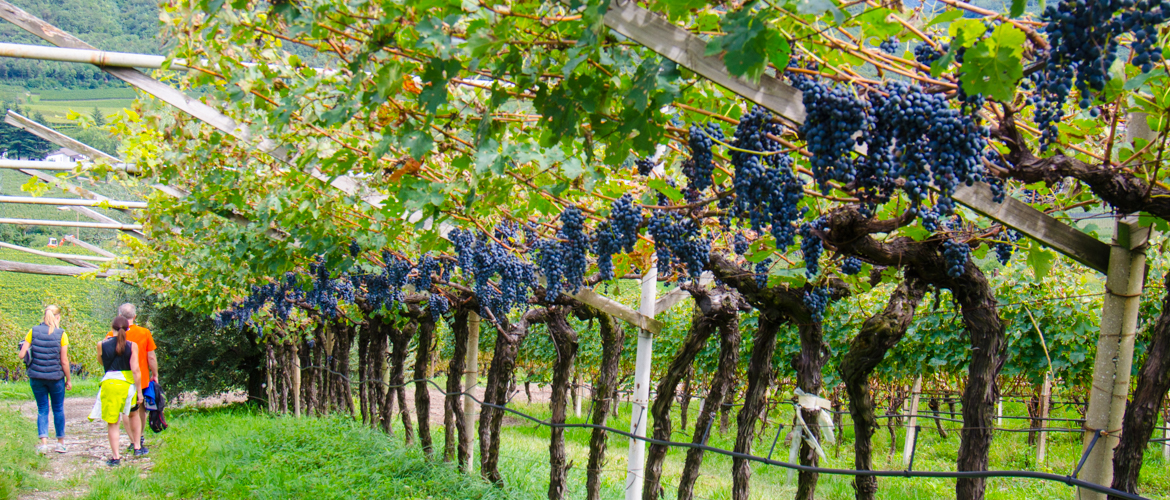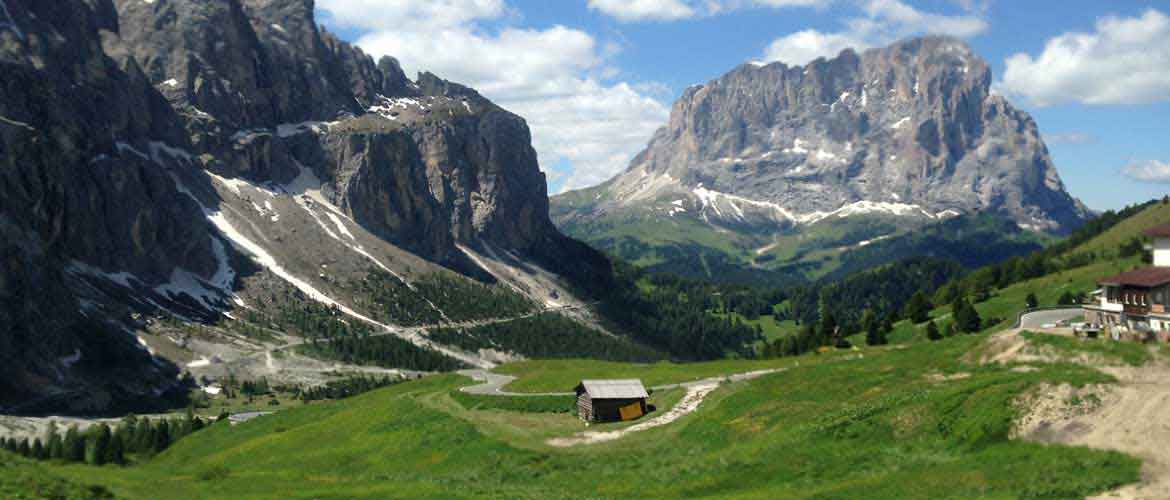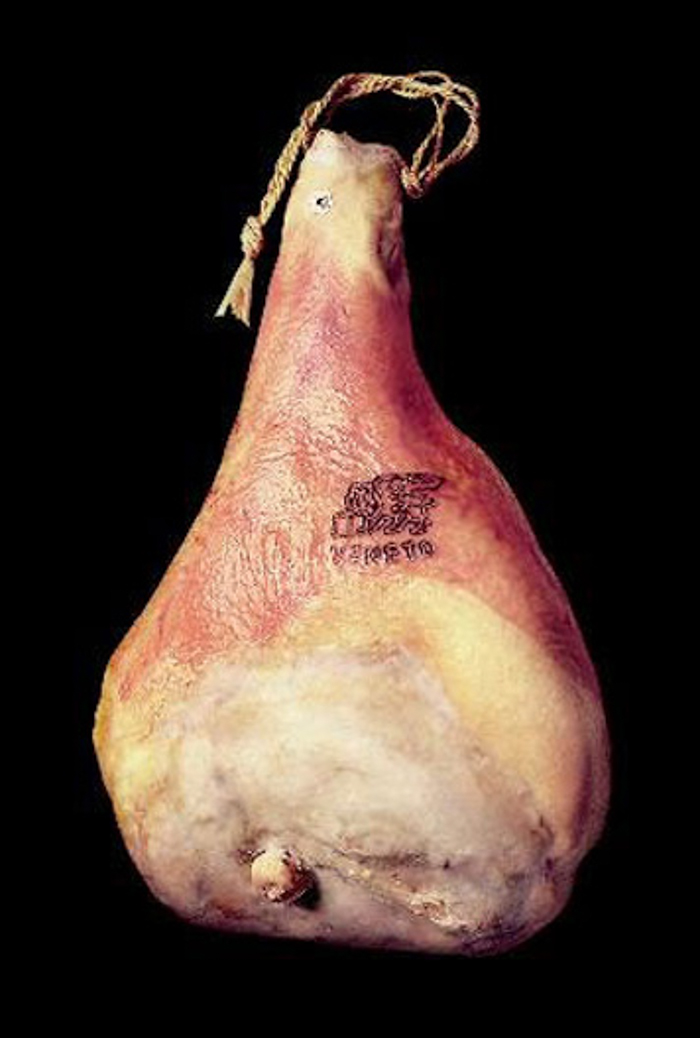
Most of us are familiar with the prosciutto from Parma in Emilia Romagna, or perhaps the San Daniele variety, but there is also a DOP prosciutto produced in the Veneto region, the Berico-Euganeo.
Pigs have been raised for food by humans for thousands of years. The Romans and Etruscans in the area were using salt as a method of preserving meats as long as 2500 years ago. The Roman term for salting and seasoning the entire leg of the pig was “perexsuccus”, or dried, which is where the current Italian word “prosciutto” derives from.
The artisanal production of ham in this region dates back to medieval times, when pigs were raised in almost every home. Today, the DOP production area for this prosciutto is comprised of 16 municipalities in the Berici and Euganei Hills, in the provinces of Vicenza, Padua and Verona.
This prosciutto is produced with the full leg of adult Large White or Duroc pigs. After the leg is removed, it is chilled to below freezing to firm up the muscles and fat. At this point it is also trimmed and deboned, and looses up to 24% of its weight. It is now dry salted with medium grain salt, which is massaged into the leg. Then the hams are placed flat side down on shelves in a temperature and humidity controlled environment. After several days, the excess salt is removed, and the legs are pressed to remove any remaining blood and to create its characteristic shape, which is somewhere between the rounder Parma ham and the much flatter shape of the San Daniele. The hams are then salted for a second time.

After 70 days, the hams are scraped and brushed, and then returned to the climate controlled storage to age for another 50 days. Once the ham reaches the minimum 120 days of aging, it is hung by passing a cord through a hole that is drilled at the top of the shank. The DOP Consorzio then conducts a quality check, and if the prosciutto passes, it is fire-branded with the symbol of the Consorzio, the Lion of St. Mark and the word “Veneto”.
The DOP regulations for the Berico-Euganeo prosciutto describe it as a “pink-colored ham that tends towards red in the lean parts and pure white in the fat parts which has a delicate and fragrant aroma.” A fully seasoned prosciutto weighs between 7 to 11 kgs.
There is also a smoked version of this ham, similar to speck, known as the Val Liona ham. A unique blend of seasoning are used in the smoking process to deliver a distinct, characteristic flavor. Val Liona juniper, laurel, coriander and rosemary are rubbed into the meat, and then it is smoked using a combination of aromatic woods such as beech and hornbeam. The Val Liona ham is in the process of obtaining an IGP authorization.





